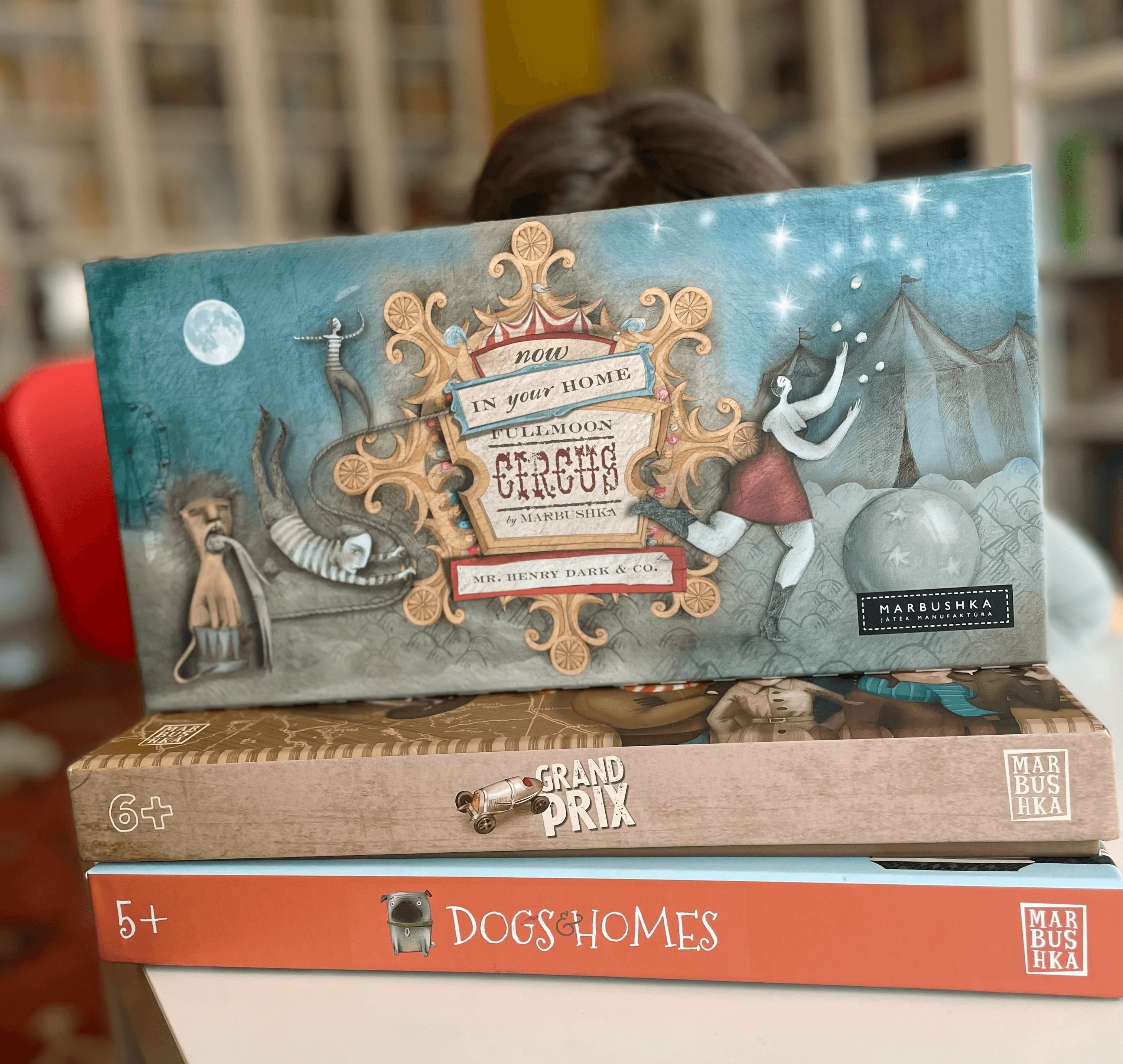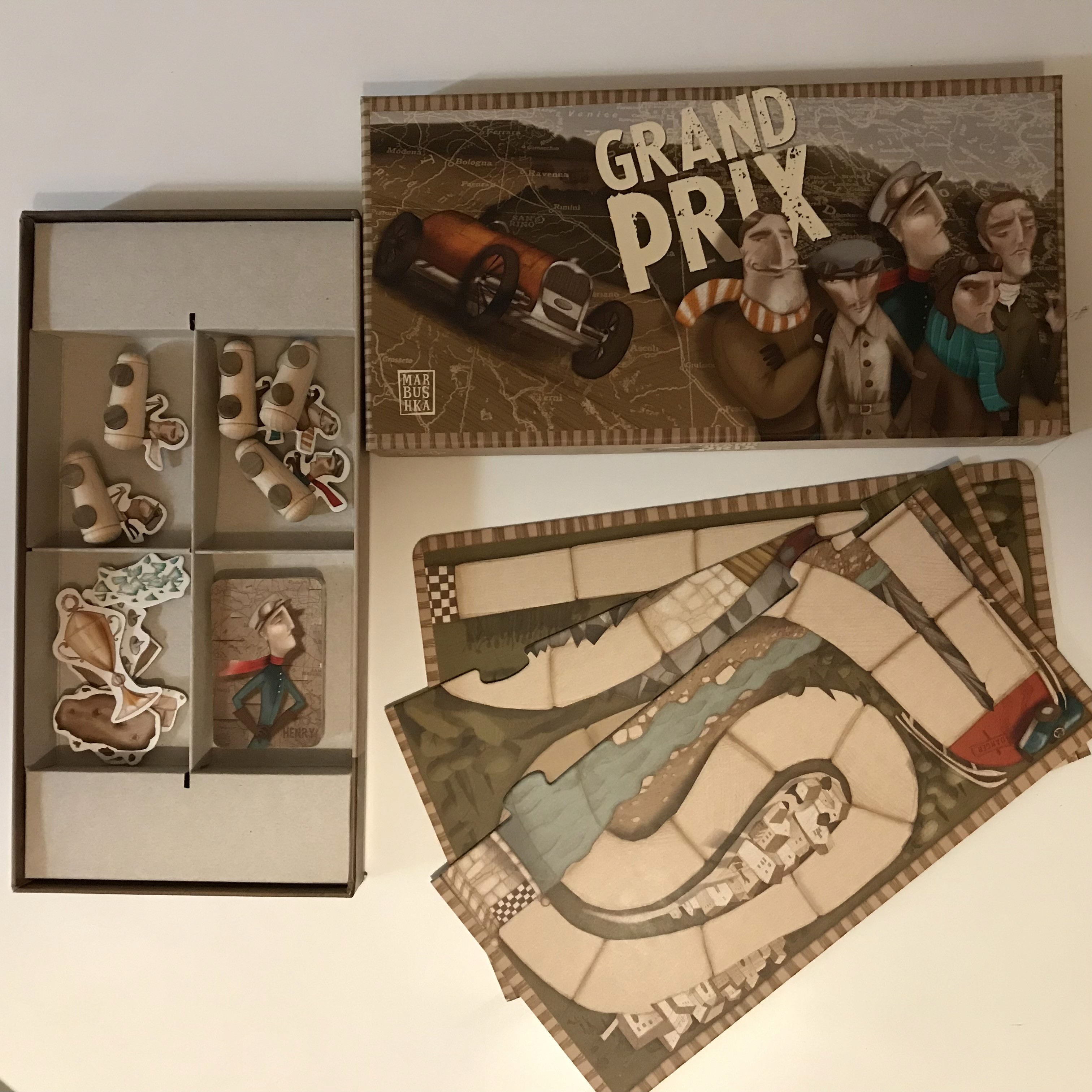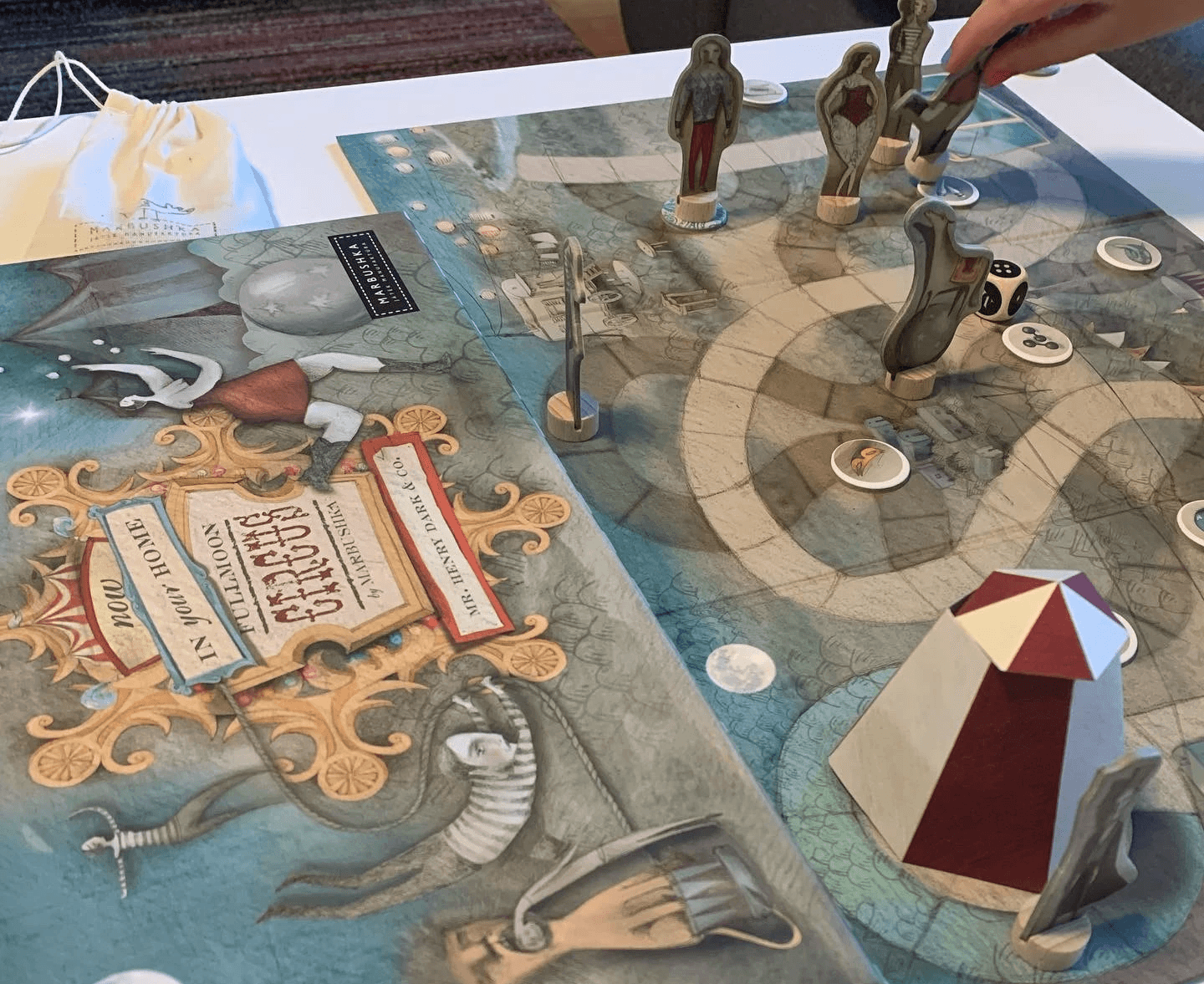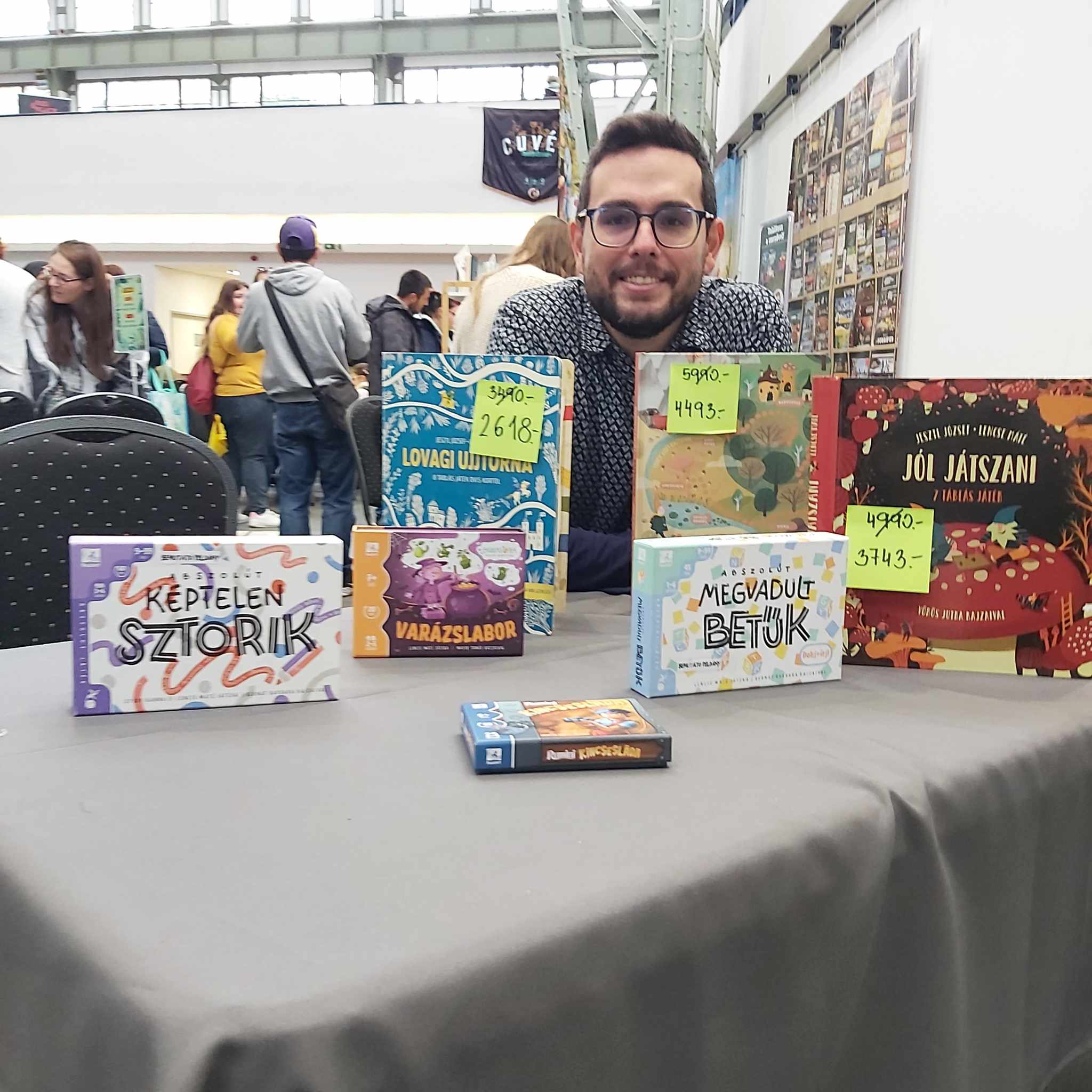Choosing the right game is our most important task when we aim to create a quality, family board gaming experience. With younger children, we often think we need to meet their expectations, but it's equally important for us, as parents and educators, to enjoy ourselves too. Below, I would like to introduce a collection of games that, in my experience, can achieve all of this.
Marbushka: Originality, Honesty, and Playfulness
When I first delved into the world of modern board games, I almost immediately encountered a Hungarian connection, a unique game manufacturer called Marbushka. Their board games looked different from anything available on the market, they were cohesive, created original worlds, and used natural materials. I have a fondness for uniqueness, and obviously, the fact that a Hungarian product was making its mark on the world stage appealed to me. Nevertheless, I steered clear of their products for a long time. The breakthrough came when I became a father and was searching for something special for my 4-year-old daughter. Since then, several Marbushka board games have found a place on our shelf and are regularly brought out to our table.
Choosing the Perfect Board Game for Young Children (Ages 4+): Key Considerations
It's really important to me that I also want to play the game, as this makes my play genuine. Of course, the theme of the board game is also a crucial factor; I try to imagine what will appeal to the specific child. If possible, the child can certainly be involved in the choice. At this point, I recommend offering a selection from a narrow range, so everything available is something you're happy with, but the child also experiences the opportunity to make a decision. It's a win-win situation.
In preschool age, the quality of the game components is especially important. They should be sufficiently large, durable, and visually appealing to both children and adults. For me, a clear additional positive with Marbushka games is experiencing how natural materials represent a qualitatively different standard and how this enhances the gaming experience – and it's educational, too.
In this age, it's important to choose games that are short, and can be quickly replayed multiple times. It's crucial that the games can be played by two players, as often only one parent plays with one child, but it's a huge plus if it also works well with 4-5 players, and is suitable for both a 4-year-old and a 6-7-year-old, so that the whole family can gather around. I wouldn't specifically highlight cooperative games, although they are useful, but competitive games are also welcome, provided that the element of chance plays a role in the game, which helps to balance the odds.
Many popular board games are designed for this age group, with publishers like HABA particularly excelling in this area. There are titles that have been successful for generations, such as Animal Upon Animal, The Little Orchard, and The Magic Labyrinth. We also recommend a wide variety, and each one is an excellent choice. However, here we will introduce our three favorite Marbushka games a bit more closely.
Adventures in the Wonderful World of Marbushka Board Games
So, I wanted something special for my daughter's board game shelf. Something that stands out among the boxes because it thinks differently about colors and shapes than most children's games. Something that makes playing a unique experience, where even the scent and feel of the components are distinct from the usual. And with all these, I don't have high expectations for the gameplay itself, just that it works.
Full Moon Circus
The circus is a very grateful theme; kids mostly love it for its excitement and mysterious world. Such is the case with Full Moon Circus. It can be played by 2-4 players, with a game time of 15-20 minutes, and although officially recommended for ages 5 and up, a four-year-old who regularly plays board games and is familiar with quantities can easily play it.

While it's fashionable to criticize games built on a roll-and-move mechanism, I enjoy them. I like them because they provide a sense of security even for players who are not very familiar with the world of modern board games. However, I don't like it when they lack at least a little twist. Fortunately, there is one here: there are detours where you can ensure you don't have to start over the entire path if the evil magician targets us.
The game is based on two dice, so luck plays a significant role, but along the way, there are decision points, which are sufficient for this age group. The atmosphere of the game is incredibly fun, as we watch what fate brings, sometimes take risks, trust in our luck, and occasionally root against each other. We usually have a great laugh at both our successes and failures. Luck ensures that the winner is always different.
Grand Prix
I've noticed that my daughter really enjoys competitive games. It's not that she never gets upset when she loses, but that's not an issue for us. Playing many such games, one can learn that sometimes we win, sometimes we lose, but the essence is the game itself. I was drawn to Grand Prix because we hadn't had a card-driven racing game yet, and I wanted my daughter to become familiar with this as well.

It can be played by 2-5 people, also takes 15-20 minutes, and although it's recommended for ages 6 and up, we've played it at four years old too. The gameplay is not complex, but it requires knowing the number cards and being able to match quantities to them, which, thanks to board games, was quickly grasped in our case.
Everyone starts with 6 cards, with values from 1 to 6. At the start of the round, everyone chooses a card, places it face down, then we reveal them simultaneously and move based on these. Of course, it matters who played the lowest value, who is further back, whether the square we are arriving at is occupied, and whether there is any obstacle there. So, you have to think through quite a lot, plus you need to try to read the other players' minds. And this is quite exciting. It's typically a game where, despite being more skilled and experienced as an adult, if I don't accurately judge what the child will play, I can easily find myself at the end of the line.
Dogs & Homes
If there's a game that made it to our shelf because of its theme, then Dogs & Homes is one such game. Just unpacking the game and looking through the dogs provides a complete experience, setting the mood. The game is for 2-4 players, with an ideal playtime of 15-20 minutes, and for safety, we also see it recommended for ages 5 and up, but it's possible to experiment with it earlier.

For us, the theme guaranteed its success, but fortunately, the gameplay is also appealing. It's fortunate because we're dealing with a rather clever memory game. Yes, memory is an element often used in games for young children - and rightly so - but it's a joy to see when there's an extra thought in it. For example, it's not always bad if you can't remember something because it can help with planning your route.
Therefore, here, luck only plays a big role at the beginning of the game, then it diminishes. Balancing the odds is fine, as a child-parent memory contest is not always won by the adult. But the main point is, the dogs are cute.

Let's Play!
This is my journey. Our journey. Yours might be different, and from the above text, the considerations are the most important, but I truly recommend getting to know special publishers who do things a bit differently. This way, exciting and unique items can make their way onto your shelves. Marbushka is a great example of this.
What other approaches could there be?
No spam, ever. Unsubscribe anytime.
Spread the Fun of Learning!
Love our content? Show your support by sharing our page with your friends and help us inspire more families and educators with the joy of learning through play! Your shares truly make a difference. Thank you for being a wonderful part of our community!

